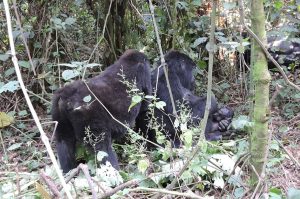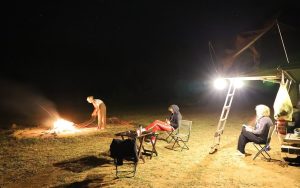A few weeks ago, the Daily Nation – a Kenyan daily newspaper – had a thought-provoking article about beach and safari tourism in Kenya. Citing recent events related to the tourism industry, the article warned that all is not well, and if remedial action is not taken quick enough, we might just as well kiss that sub-sector goodbye. Click here to read the full article.
Of course this wasn’t the first time someone was writing or saying something critical of Kenya’s tourism. In May 2010 for example, the World Bank conducted a study whose findings they published in a report titled “Kenya’s Tourism: Polishing the Jewel”.
The World Bank report identified several challenges facing the Kenya tourism industry, among them “a tired product offering in need of upgrade and diversification”. If you wish, you can download the full report (in pdf) here.
If you ask any honest industry insider or Kenya travel expert, they too will readily admit that several things need to be changed for Kenya to retain its position as one of Africa’s top destinations. Just last month for example, the MD for Abercrombie & Kent in Kenya was quoted in the Travel Weekly alluding to the fact that the traditional Kenya safari product is no longer enough to maintain its competitive edge over newer destinations like Tanzania, Zambia, South Africa, and Botswana.
So, what is wrong really?
The World Bank report I mentioned above identified the key issues as:
- Natural and wildlife asset degradation that threatens the future of tourism
- A product offering that is increasingly non-competitive
- A sector struggling with a disabling “enabling environment” facilitated by ineffective institutions
- An insufficient and inadequately trained labor force, which is crippling the sector’s ability to be agile and competitive
I think the report was on point on all issues except the last. I am obviously biased, but I believe that our labor force is adequately trained and competent enough to deliver a world class tourism experience, or at the very least, a better experience than in our “rival” markets.
In my opinion, lethargy and complacency have been the biggest problems bedevilling the industry. Lethargy, mostly on the part of the government and other authorities.
Take human-wildlife conflict for example, the authorities know that if people settle in the animal migration paths, conflict is inevitable. But the same authorities turn a blind eye (sometimes due to political expediency) as people encroach on animal habitats. Then when pastoralists kill six lions, as happened last week, they start crying foul and issuing threats, when they should have acted ages ago.
Another example is the congestion problem (e.g at the Mara). The authorities act unconcerned as lodges, camps, and other facilities mushroom all over the game reserve without any consideration to how they disrupt the ecosystem. (Read the two-years old story about how 70% of the lodges in the Mara are illegal). Then when conservationists make enough noise, the authorities wake up from their slumber and pretend to act.
Both the authorities and private stakeholders are guilty of complacency. Even as newer markets – Botswana, Namibia, South Africa, Zambia, Tanzania, etc – emerged and refined their products, most of us remained confident in our “great product”, the same product we have been selling since the mid 20th century. Of course a few smart players have been innovative enough to offer unique and interesting services, but generally, not much has changed over the years.
Complacency is also the reason why government doesn’t pay as much attention as it should to improving the infrastructure, e.g the Nairobi to Masai Mara road. After all, the Mara has so much to offer, tourists will still come, or so seems the reasoning.
Is it all doom and gloom?
NO, most certainly. As a matter of fact, Kenya is still one of the best holiday destinations in Africa. A safari to Kenya will, for the foreseeable future, remain a richly satisfying experience, especially for a first-time visitor. But with the increasing competition from other equally great destinations with superior offering, the industry needs to move faster to innovate and maximize on the untapped potential, or die.
So far, the private wildlife conservancies are doing a great job, succeeding where the government failed. The conservancies strictly control the number of visitors allowed within their borders. They have more effective and efficient security and anti-poaching measures, enhancing survival for the endangered species. Most of them also work very closely with the local communities, thus promoting conservation and eco-friendly practices beyond their borders.
As a result of their good management practices, the quality of the safari experience in the conservancies is top notch. No crowding, more exclusivity, you can go on night game drives, etc. Naturally, a safari in the conservancies will cost you much more than it would in the national parks and reserves.
Another positive development is the Kenya Wildlife Service’s effort to open up newer, off-the-beaten-track safari circuits. , e.g the Western Kenya safari circuit. The safari experience in this circuit is completely different from the more traditional parks and reserves.
A few companies have also been offering very specialized travel packages that don’t fit in the traditional safari mould. Bird watching and butterfly watching are just some of these experiences.
But all this is just a small part of Kenya’s vast unexploited potential. Now is the time for the government and other tourism stakeholders to rise up and add more variety to Kenya’s safari product offering or risk going stale.
Would you want to go on a Kenya Safari today?
My friends at Go Africa Safaris have some amazing packages. Visit their Kenya safari packages page to see what they have to offer.
You can also have a look at the many great safari packages available at the Africa Guide travel centre.




